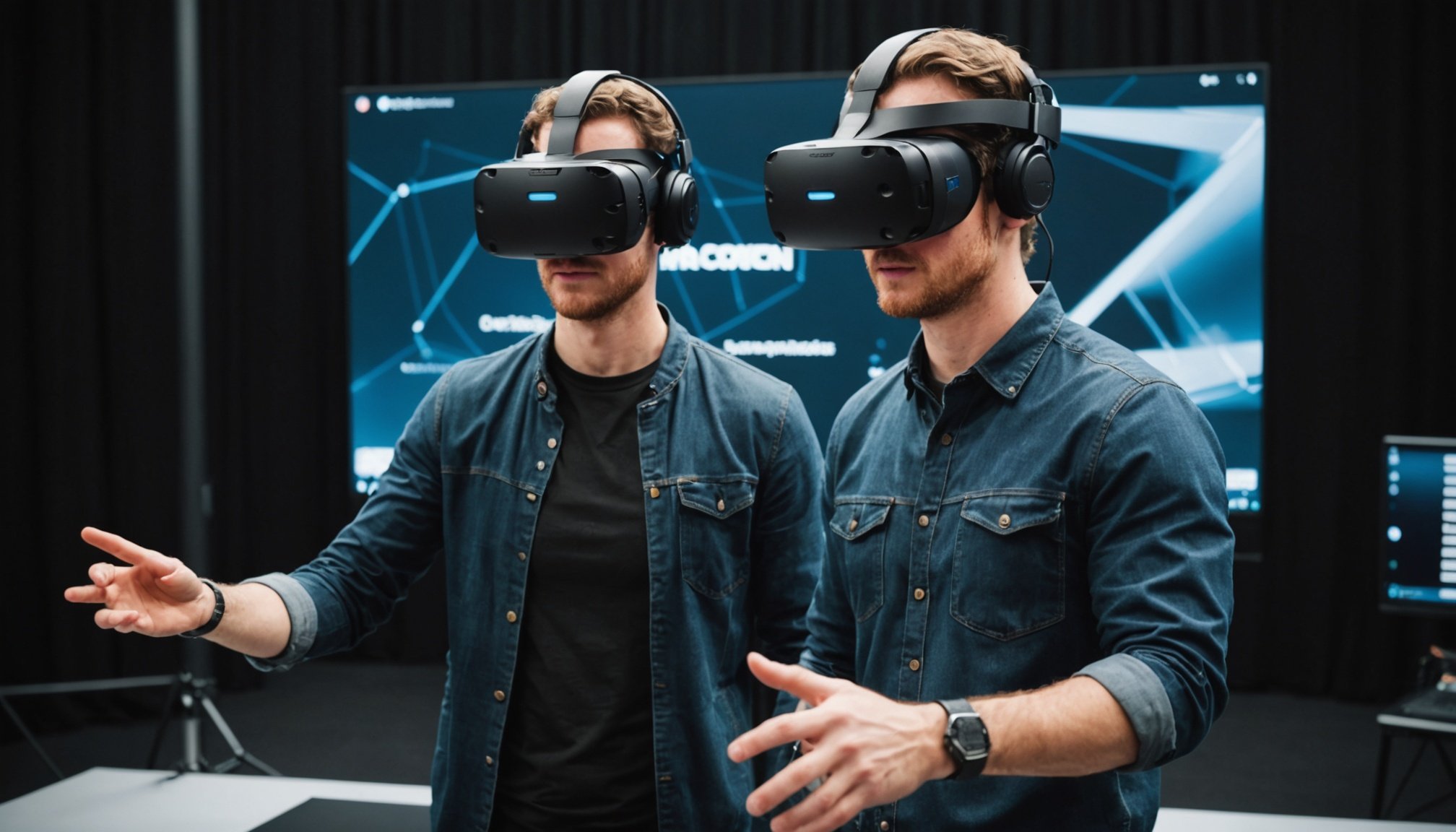Understanding Multiplayer Dynamics in VR Development
Exploring the intricacies of multiplayer dynamics reveals their profound impact on VR development. At the heart of these next-gen experiences is the power of immersive, shared environments that allow users to connect and collaborate. Multiplayer dynamics enable players to explore a virtual world together, creating interactions that mirror real-life social experiences.
Key Components of Effective Multiplayer Interactions
Successful multiplayer interactions hinge on several components. Synchronization ensures that users experience the virtual environment simultaneously, fostering real-time communication and cooperation. Scalability is also essential, enabling the VR system to accommodate varying numbers of participants without compromising performance. Additionally, intuitive user interfaces play a crucial role, allowing players to navigate and interact with each other effortlessly.
In parallel : Elevate your forest adventure: essential techniques for creating lifelike foliage in exploration games
The Role of User Engagement
User engagement is a driving force in shaping VR experiences. High engagement levels can significantly enhance multiplayer dynamics by encouraging users to interact more naturally. Engaging content keeps players immersed and can lead to more meaningful connections within the virtual space. Developers focus on creating dynamic environments and compelling narratives to achieve this, ensuring that users remain captivated and actively involved. Understanding these elements is essential for crafting experiences that truly resonate with users in the world of VR development.
Technical Challenges in Developing Multiplayer VR Experiences
Creating engaging multiplayer VR experiences involves several technical hurdles. Three of the most significant challenges include network latency, VR synchronization, and scalability for large player bases. Each of these factors plays a crucial role in the overall user experience, requiring careful consideration by developers.
Topic to read : Exploring boundless realms: how procedural generation transforms survival games with limitless landscapes
Network Latency and Its Impact on Gameplay
In multiplayer VR, network latency can significantly affect gameplay by creating delays in communication. When players perform actions, even a slight lag can disrupt the immersive experience. This delay can cause discrepancies in player’s perception and virtual interactions, leading to frustration. To remedy this, developers aim to minimise latency through efficient data transmission and robust network infrastructure.
Synchronization Issues Across Multiple Users
VR synchronization is key to maintaining a consistent experience for all users. When multiple players are involved, ensuring that everyone sees the same virtual environment at the same time is challenging. Desynchronization can cause inconsistencies in gameplay events. Solutions often involve precise time-stamping and efficient data handling to keep everyone on the same page.
Scalability Concerns for Large Player Bases
As the player base grows, scalability becomes a major concern. Supporting a large number of simultaneous users requires optimized server performance and capacity. Developers employ strategies such as dynamic load balancing and scalable architecture designs to handle increasing demand without compromising the virtual experience.
User Experience Considerations in Multiplayer VR
In multiplayer VR, the user experience greatly influences engagement levels. A well-crafted user interface design is crucial in these environments. It acts as a bridge between the virtual world and the user, ensuring every interaction is intuitive and seamless. When navigating complex VR spaces, an effective interface anticipates user needs, reducing frustration and enhancing overall enjoyment.
Immersive design significantly boosts social interactions within VR settings. Core features like spatial audio bring a new wave of realism, allowing users to converse naturally, as if they were physically present together. Avatars, with detailed expressions and movements, add an extra layer of depth, making social exchanges more genuine and emotionally resonant.
Striking a balance between immersion and accessibility is key to catering to diverse users. Not everyone experiences VR in the same way, and accommodating factors like motion sickness, or varying levels of technological familiarity, can broaden accessibility. Offering customizable settings allows users to tweak their experiences to suit their comfort levels, making VR environments more inclusive.
Ultimately, prioritizing the user’s journey in VR fosters meaningful interactions, which are central to compelling multiplayer experiences.
Innovative Practices in Multiplayer Game Design
Multiplayer game design has evolved significantly, primarily due to innovative practices that enhance player interaction and engagement. One of the standout areas is the integration of multiplayer mechanics with Virtual Reality (VR) simulations, providing immersive experiences.
Leveraging Emerging Technologies
Emerging technologies are at the forefront of transforming multiplayer mechanics. VR simulations enable players to experience games in a more interactive and engaging environment. With innovations like real-time audio and physics engines, games now support seamless interaction between players, elevating the overall gaming experience. These advancements in VR encourage developers to create realistic and complex systems, allowing gamers to explore virtual worlds together like never before.
Case Studies of Successful Multiplayer VR Experiences
Many titles have successfully integrated these mechanics, showcasing the potential of VR simulations. Games such as “Beat Saber” and “Echo VR” lead with innovative multiplayer experiences that captivate audiences. Their success can be attributed to compelling gameplay combined with cooperative and competitive elements that make full use of VR’s immersive capabilities.
Integrating User Feedback into Design Processes
User feedback is crucial for refining game design. To drive continuous improvements in multiplayer mechanics, developers actively incorporate player suggestions and insights. This feedback loop ensures games are not only innovative but also meet the expectations and preferences of their audience, fostering a more engaging and user-centric gaming experience.
Trends Shaping the Future of VR Multiplayer Interactions
In the ever-evolving landscape of virtual reality (VR), future trends in multiplayer interactions are rapidly gaining traction. Industry experts emphasize the significance of VR interactions as technology progresses. Currently, developers are focusing on enhancing social experiences and creating more immersive environments for players. The incorporation of realistic avatars and voice recognition technology can be observed, enhancing the sense of presence in virtual spaces.
As we look ahead, industry predictions point towards a significant transformation in multiplayer mechanics. Upcoming titles are expected to leverage advancements like haptic feedback and eye-tracking technology to foster deeper engagement and collaboration among users. These technologies not only enhance gameplay but also ensure that interactions within VR become more natural and intuitive.
Adapting to technological advancements is paramount for the growth of VR multiplayer experiences. As graphics improve and processing power increases, developers are tasked with the challenge of integrating these advancements into the design of sophisticated multiplayer platforms. This adaptation will likely dictate the direction of future VR titles, making it crucial for stakeholders to remain abreast of these emerging trends to cater to evolving consumer expectations.











